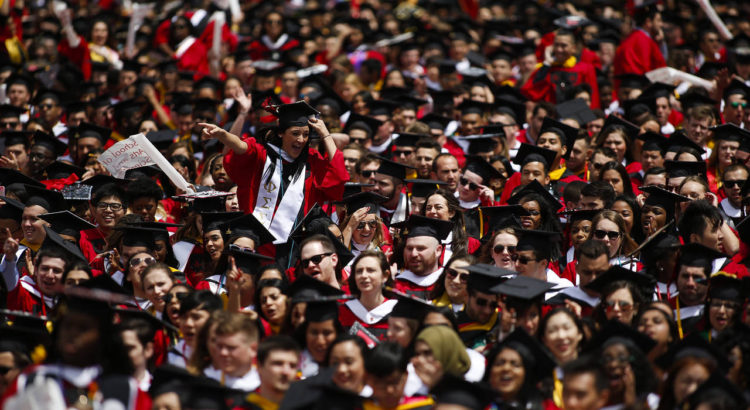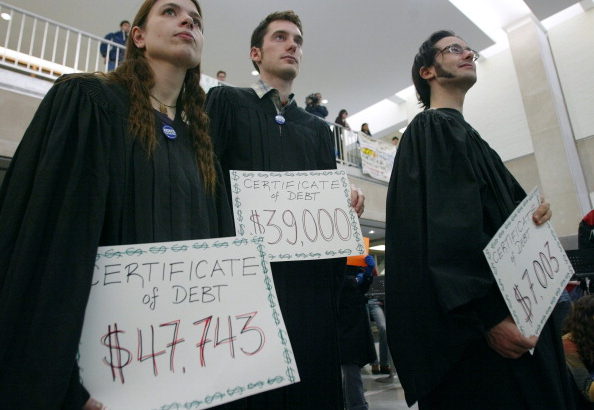12 de mayo de 2019 / Autor: Editores OVE
Recomendamos la lectura del portal Otras Voces en Educación en su edición del día domingo 12 de mayo de 2019. Esta selección y programación la realizan investigador@s del GT CLACSO «Reformas y Contrarreformas Educativas», la Red Global/Glocal por la Calidad Educativa, organización miembro de la CLADE y el Observatorio Internacional de Reformas Educativas y Políticas Docentes (OIREPOD) registrado en el IESALC UNESCO.
00:00:00 – España: La mitad de los catedráticos y el 15 por ciento de los profesores universitarios se jubilarán en los próximos siete años
http://otrasvoceseneducacion.org/archivos/308621
01:00:00 – Argentina: El ajuste de Macri a la educación en 4 datos (Video)
http://otrasvoceseneducacion.org/archivos/308631
02:00:00 – Brasil: Jair Bolsonaro promueve que los alumnos filmen a los docentes que expresen ideas de izquierda. Delatando al maestro
http://otrasvoceseneducacion.org/archivos/308628
03:00:00 – Observatorio Pedagógico Latinoamericano Radio. Primer Programa. México (Audio)
http://otrasvoceseneducacion.org/archivos/308720
04:00:00 – 3 millones de mayores de 60 años en EE.UU. todavía están pagando sus préstamos estudiantiles
http://otrasvoceseneducacion.org/archivos/308775
05:00:00 – Por qué sí y ahora con los maestros de la CNTE. Reforma educativa y laboral (Audio)
http://otrasvoceseneducacion.org/archivos/309135
06:00:00 – Lineamientos curriculares para la aplicación del eje transversal educación y perspectiva de género en séptimo, octavo y noveno grado de educación básica general (PDF)
http://otrasvoceseneducacion.org/archivos/309141
07:00:00 – YouTube y las Universidades
http://otrasvoceseneducacion.org/archivos/308724
08:00:00 – Libro: ¿Hasta dónde saben los docentes? (PDF)
http://otrasvoceseneducacion.org/archivos/309144
09:00:00 – Matemática literaria: qué pasa cuando se juntan dos materias que parecen opuestas
http://otrasvoceseneducacion.org/archivos/309129
10:00:00 – Libro: Actores, identidades y políticas educativas. Una revisión desde la Alianza por la Calidad de la Educación (PDF)
http://otrasvoceseneducacion.org/archivos/309147
11:00:00 – Innovar en Pedagogía 2019
http://otrasvoceseneducacion.org/archivos/308727
12:00:00 – Brasil: Contra los recortes de Bolsonaro en Educación
http://otrasvoceseneducacion.org/archivos/308778
13:00:00 – El Rap de la Educación 2.0
http://otrasvoceseneducacion.org/archivos/309138
14:00:00 – China reclutará maestros jubilados para escuelas rurales
http://otrasvoceseneducacion.org/archivos/309123
15:00:00 – Las 10 palabras que tienen que cambiar la educación
http://otrasvoceseneducacion.org/archivos/308625
16:00:00 – Cuba: Seminario de Internacionalización de la Educación Superior en la Universidad de Oriente
http://otrasvoceseneducacion.org/archivos/309120
17:00:00 – Robert Swartz: «Las piedras angulares de las nuevas aulas del siglo XXI son pensamiento, comunicación y colaboración»
http://otrasvoceseneducacion.org/archivos/309126
18:00:00 – Perú: Ministra de Educación defiende ante el Congreso el enfoque de géneros en la escuela
http://otrasvoceseneducacion.org/archivos/309117
19:00:00 – ¿Otra vez otro Modelo Educativo?
http://otrasvoceseneducacion.org/archivos/308879
20:00:00 – Argentina: Cambio de régimen para docentes que investigan
http://otrasvoceseneducacion.org/archivos/309114
21:00:00 – Enseña Chile presentó en Concepción su documental sobre estado de la educación
http://otrasvoceseneducacion.org/archivos/309132
22:00:00 – Estados Unidos: Adolescentes transgénero en escuelas con restricciones en los baños tienen mayor riesgo de sufrir una agresión sexual
http://otrasvoceseneducacion.org/archivos/308874
23:00:00 – Colombia: “Quien ingrese a la universidad debe terminar”: ministra habla del reto en la educación superior
http://otrasvoceseneducacion.org/archivos/308731
En nuestro portal Otras Voces en Educación (OVE) encontrará noticias, artículos, libros, videos, entrevistas y más sobre el acontecer educativo mundial cada hora.
ove/mahv











 Users Today : 126
Users Today : 126 Total Users : 35459592
Total Users : 35459592 Views Today : 207
Views Today : 207 Total views : 3417965
Total views : 3417965
Resumen: Dos proyectos de ley de educación se encuentran en sección de discusión la legislatura de New Jersey. Ambos son factibles para ganar la aprobación en la Asamblea Estatal y el Senado, respectivamente. Esa aprobación llegó como gobernador Chris Christie estaba haciendo el caso para revertir la histórica decisión del distrito escolar ABAD del estado, y la minoría republicana de la Asamblea tenido duras declaraciones de denegación demócratas para entretener a un compromiso con el gobernador en la financiación de las escuelas. El primero de estos dos proyectos de ley, patrocinado por el presidente del Senado Steve Sweeney (D-3), tiene que ver con la creación de una comisión para financiar completamente a las escuelas con fondos suficientes, pues, ha habido déficit de hasta $ 1 billón un año durante el mandato de Christie. El segundo proyecto terminaría la práctica del estado de forzar fiadores de los padres para continuar el pago de préstamos estudiantiles de sus hijos, incluso en el caso de su muerte. Nueva Jersey es un caso atípico entre los estados similares en sus prácticas de cobro agresivas y recibió atención negativa en la prensa después de una investigación ProPublica mostró una mujer todavía pagar los préstamos de su hijo después de su asesinato. Ese proyecto de ley, patrocinado por los Asambleístas Vince Mazzeo (D-2) y Andrew Zwicker (D-16).